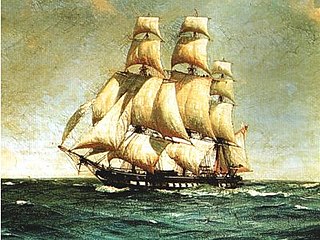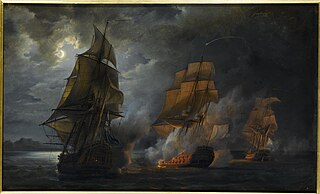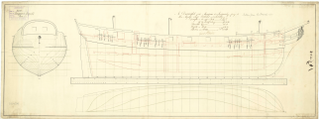Related Research Articles
Ten ships of the Royal Navy have borne the name HMS York after the city of York, the county seat of Yorkshire, on the River Ouse.
HMS Surprise or Surprize is the name of several ships. These include:
Twelve ships of the Royal Navy have been named HMS Active or HMS Actif, with a thirteenth currently under construction:
HMS Nonsuch was a 64-gun third rate ship of the line of the Royal Navy, built by Israel Pownoll and launched on 17 December 1774 at Plymouth. She was broken up in 1802.
Jean Bart may refer to one of the following ships of the French Navy or privateers named in honour of Jean Bart, a French naval commander and privateer.
Sixteen ships of the Royal Navy have borne the name HMS Alert, while another was planned:
Twenty-two ships of the Royal Navy have borne the name HMS Fortune:
Three ships of the Royal Navy have borne the name HMS Alligator, after the marine reptile, the alligator. A fourth ship was planned but later cancelled:
HMS Proselyte was a 32-gun Royal Navy fifth-rate frigate. She was the former Dutch 36-gun frigate Jason, built in 1770 at Rotterdam, the Netherlands. Her crew mutinied and turned her over to the British in 1796. She then served the Royal Navy until she was wrecked in 1801.

Alceste was a Magicienne class frigate of the French Navy, launched in 1780, that the British seized at the Siege of Toulon. They transferred her to the Kingdom of Sardinia, but the French recaptured her a year later in the action of 8 June 1794. The British captured her again at the action of 18 June 1799 and took her into service as HMS Alceste. In 1801 she became a floating battery and she was sold the next year.

HMS Jupiter was a 50-gun Portland-class fourth-rate ship of the Royal Navy. She served during the American War of Independence, the French Revolutionary Wars, and the Napoleonic Wars in a career that spanned thirty years. She was also one of the fastest ships in the Royal Navy as shown by her attempt to capture the cutter Eclipse under Nathaniel Fanning.

During the late 18th and early 19th centuries, many French privateers and letters of marque bore the name Duguay-Trouin, named for René Duguay-Trouin: René Trouin, Sieur du Gué, French privateer, admiral and Commander in the Order of Saint Louis. Between 1760 and 1810, warships of the Royal Navy captured seven different French privateers all with the name Duguay-Trouin.
Seven ships of the French Navy have borne the name Sans-Culotte in honour of the Sans-culottes:

HMS Barbuda was commissioned into the Royal Navy in 1780 after having briefly served as an American privateer. Barbuda was one of the two sloops that captured Demerara and Essequibo in 1781, but the French Navy captured her there in 1782 and took her into service as Barboude. The French Navy sold her to private owners in 1786, and she served briefly as a privateer in early 1793 before the French Navy purchased her again and named her Légère. She served them until mid-1796 when the Royal Navy captured her and took her into service as HMS Legere. She was wrecked off the coast of Colombia, without loss of life, in February 1801.
The French brig Duc de Chartres was built between 1779 and 1780 at Le Havre as a 24-gun privateer. As a privateer she captured one British warship before in 1781 the Royal Navy captured her. The Royal Navy took her into service as HMS Duc de Chartres. She then captured several American privateers and armed merchant vessels, and one French naval corvette in a noteworthy single-ship action. The Navy sold Duc de Chartres in 1784.
HMS Pilote was a cutter launched for the French Navy at Dunkirk in 1778. The British Royal Navy captured her in 1779 and took her into service under her existing name. It sold her in 1799.

HMS Marquis de Seignelay, was the French privateer Marquis de Seignelay from Le Havre, active in 1779–1800. The British Royal Navy captured her in 1780 and recommissioned her as the 14-gun sloop HMS Marquis de Seignelay. She was sold in March 1786.
References
- Demerliac, Alain (1996). La Marine de Louis XVI: Nomenclature des Navires Français de 1774 à 1792 (in French). Éditions Ancre. ISBN 9782906381230. OCLC 468324725.